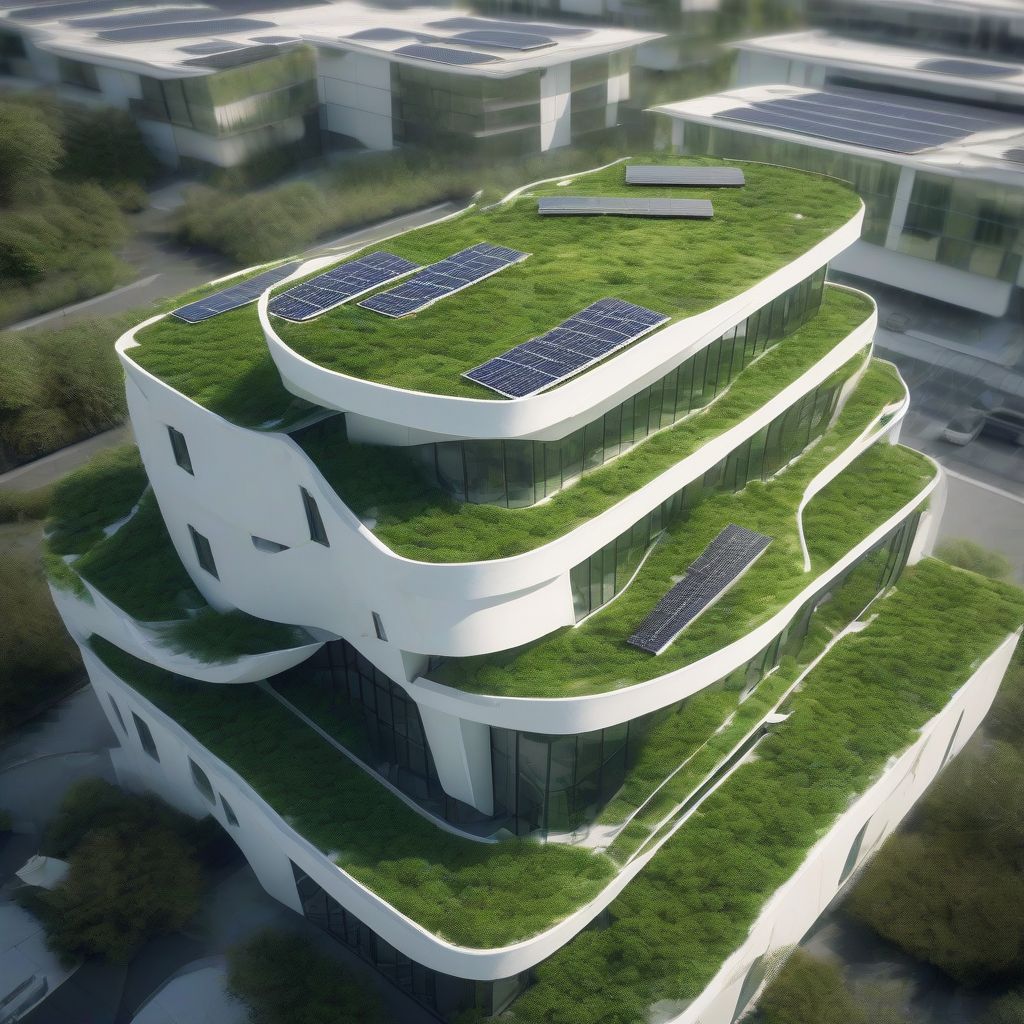Imagine a world where buildings don’t just house us, but actively contribute to a healthier planet. This vision is becoming a reality thanks to green building practices, a revolutionary approach to construction and design that significantly reduces energy consumption. But how exactly are these eco-conscious buildings achieving such impressive energy efficiency?
Understanding the Power of Green Building
Green building, also known as sustainable building, goes beyond just being environmentally friendly. It’s a holistic approach that considers the entire lifecycle of a building, from the initial design and construction to its operation and eventual demolition. The core principle revolves around minimizing the building’s environmental impact while maximizing its efficiency and the well-being of its occupants.
This approach is gaining significant traction globally as individuals and businesses alike are recognizing the substantial economic and environmental benefits it offers.
Key Green Building Strategies for Energy Efficiency
Green building employs a range of innovative strategies to minimize energy consumption, making them far more efficient than traditional buildings:
1. Harnessing the Sun’s Power: Passive Solar Design
Imagine a building designed to maximize natural sunlight during the winter, passively heating the interior, while minimizing summer heat gain to reduce cooling needs. That’s the beauty of passive solar design. By strategically positioning windows, walls, and floors, architects can significantly reduce reliance on artificial heating and cooling systems, leading to impressive energy savings.
2. Embracing Renewable Energy Sources
Green buildings often integrate renewable energy systems like solar panels and wind turbines. These systems generate clean, renewable energy onsite, reducing dependence on fossil fuels and minimizing greenhouse gas emissions.
3. Optimizing Energy Performance with Smart Technology
From intelligent lighting systems that adjust based on occupancy and daylight availability to advanced building automation systems that monitor and control energy use in real-time, technology plays a pivotal role in enhancing energy efficiency in green buildings.
4. Supercharging Efficiency with High-Performance Insulation
Just like a thermos keeps your coffee warm, high-performance insulation in walls, roofs, and floors plays a crucial role in maintaining a comfortable temperature inside the building while minimizing heat loss or gain. This translates to a significant reduction in energy consumption for heating and cooling.
5. Choosing Sustainable and Energy-Efficient Materials
The construction materials used in green buildings are carefully selected for their sustainability and energy efficiency. From recycled and locally sourced materials to rapidly renewable resources like bamboo and cork, these eco-friendly options minimize the building’s carbon footprint and promote a healthier indoor environment.
 Green Building Energy Efficiency
Green Building Energy Efficiency
6. Water Efficiency: A Key Player in Energy Conservation
While it might seem unrelated, water conservation plays a vital role in reducing energy consumption. Green buildings incorporate low-flow fixtures, efficient irrigation systems, and even rainwater harvesting systems to minimize water usage. This, in turn, reduces the energy required for water heating, pumping, and treatment.
The Compelling Benefits of Green Building
The advantages of green building extend far beyond reduced energy consumption:
- Financial Savings: Lower energy and water bills translate to significant cost savings for building owners and occupants over the long term.
- Environmental Stewardship: Green buildings minimize their environmental impact by reducing greenhouse gas emissions, conserving resources, and promoting biodiversity.
- Healthier Indoor Environments: Improved indoor air quality, natural lighting, and thermal comfort contribute to a healthier and more productive environment for occupants.
- Increased Property Value: Green buildings are highly desirable, often commanding higher rental rates and resale values compared to conventional buildings.
The Future is Green: A Growing Movement
The green building movement is rapidly gaining momentum as individuals, businesses, and governments recognize its potential to create a more sustainable and energy-efficient future. As technology advances and costs continue to decrease, we can expect to see even more innovative and effective green building solutions emerge, transforming our built environment for the better.
Conclusion: Embracing a Sustainable Future
Green building practices are revolutionizing the way we design, construct, and operate buildings. By prioritizing energy efficiency, renewable energy, and sustainable materials, these innovative structures significantly reduce our environmental impact while creating healthier and more cost-effective spaces for us to live, work, and play. As we move towards a more sustainable future, embracing green building practices is no longer an option but a necessity for a healthier planet and a brighter tomorrow.
What steps can you take to support the green building movement and contribute to a more energy-efficient future? Share your thoughts and ideas in the comments below.
[amazon bestseller=”green building”]
